Long, long ago, there was a rich man who married a very kind and beautiful woman in a small town in a far away land. Although they had been husband and wife for about four years, his wife did not bear him a child. So, one beautiful day, the rich man held a sacred ceremony, begging for a child from a big, tall tree called, “Toll Hi.” At the toll Hi tree lived a “Tavarbood.” “Tavarbood” is a male angel who lives at the bottom of heaven. After hearing the request, Tavarbood brought it to “Phra-Ya-In.” Phra-Ya-In is also a deity, but has higher nobility and title and lives at a higher level of heaven.
As a result, Phra-Ya-In granted one deity named, “Tham-Ma-Barn” (Buddha in a previous Yuka), to incarnate as a son to the couple. Then the wife of the rich man had a baby boy name, “Tham-Ma-Barn.” Since childhood, Tham-Ma-Barn had received special training and education, which allowed him to know and do everything. Tham-Ma-Barn could answer any question when asked. He was clever and knowledgeable. Tham-Ma-Barn was a great teacher and conducted many ceremonies for the people.
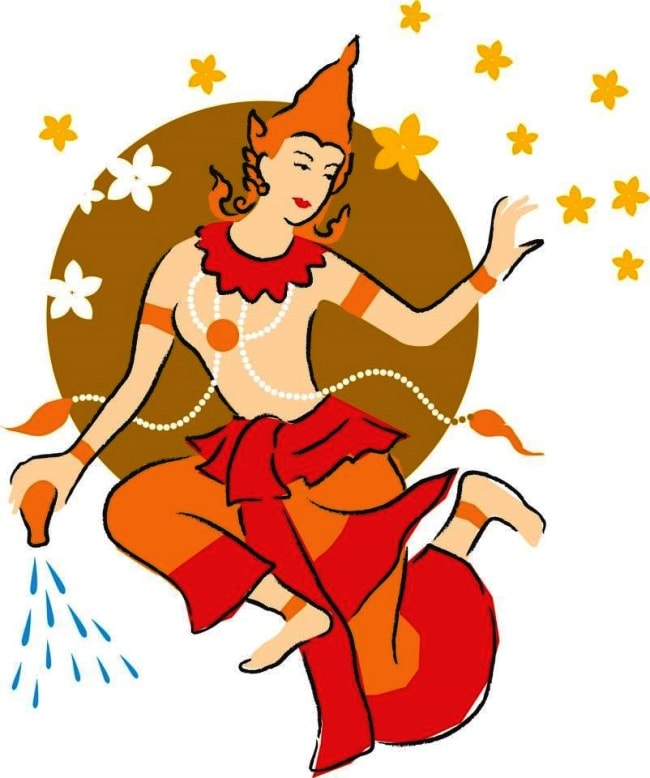
Hearing about the extraordinary reputation of Tham-Ma-Barn, “Ca-Bin-Ra-Pom,” who was a deity and lived at the highest level of Heaven, came down to the world to test Tham-Ma-Barn’s knowledge and wisdom. Before Ca-Bin-Ra-Pom asked Tham-Ma-Barn any questions, he asked Tham-Ma-Barn o agree on his proposal. Ca-Bin-Ra-Pom suggested, “I will ask you three questions. If you cannot answer them, I will cut off your head as sacrifice to the teaching of Buddha. On the other hand, if you can answer all three questions, I will cut off my head out of my respect for your knowledge.
Tham-Ma-Barn agreed on the suggestion and the three questions given to him were; One, where is the virtue of a person in the morning? Two, where is the virtue of a person at noon? Three, where is the virtue of a person in the evening?
Ca-Bin-Ra-Pom gave Tham-Ma-Barn seven days to supply him with answer. Day one, day two, day three, day four, and day five went by quickly and Tham-Ma-barn did not find answer to even one question of Ca-Bin-Ra-Pom. When six days arrived, Tham-Ma-Barn still could not find the answers. He was so tired of thinking and searching for the right answers. He was so exhausted that when he came upon a big tree in the forest, he took a rest at its foot. As he closed his eyes, he heard two excited voices from afar above branch of the tree. At the time, two eagles on the branch, husband and wife were discussing the contest of Ca-Bin_Ra-Pom and Tham-Ma-Barn. Tham-Ma-Barn, who was resting quietly at the bottom of the tree, still had his eyes closed, but he continued to listen in on the two eagle’s conversation.
The husband eagles told his wife that Tham-Ma-Barn would lose the bet for sure, because the questions were very had and no one on this world knew the answer except the questioner and him. The wife eagle was curious to know the answers to the questions and she begged her husband to tell her. Without any hesitation, the husband explained the answers to his wife and Tham-Ma-Barn now knew the answers and went home happily.
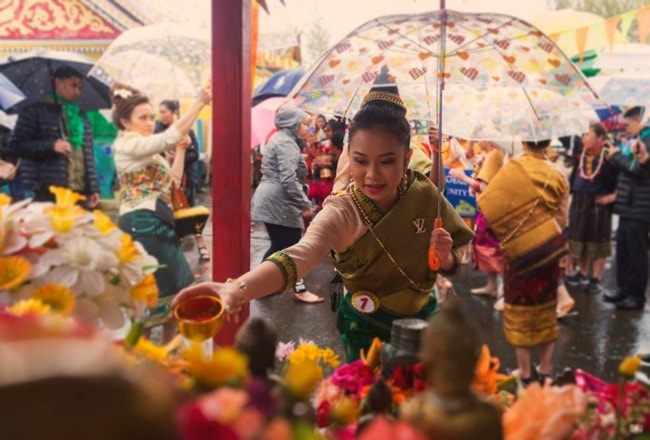
On the following day, the seventh day, Tham-Ma-Barn and Ca-Bin-Ra-Pom came face-to-face and Ca-BinRa-Pom asked for the answer. Tham-Ma-Barn answered, “In the morning, the person’s virtue is on the face, because when a person wakes up he or she washes his/her face.” At noon, the virtue of a person is on the chest and the body, because he/she puts water on the chest and takes a bath. In the evening, the virtue of a person is on the feet, because he/she washes his/her feet before going to bed.”
Ca-Bin-Ra-Pom was very surprised that Tham-Ma-Barn answered all the questions correctly, but he gracefully acknowledged his defeat by agreeing to cut of his own head, as he had promised. Because Ca-Bin-a-Pom’s head was so holy that if it dropped onto the ground, it would cause fire and burn down the whole world; if his head rose into the air, the land would become arid and parched and people would die’ if his head fell into the ocean, the ocean would dry up. Therefore, before cutting off his head, he asked his seven daughters to gather around to receive his instruction. “My daughters,” he stated, “After I cut off my head, take my head and parade it around the earth axis 60 times, and then take it to “Kay_Rad” Mountain. Each year, one of you has to take turns to parade my head around the earth axis and bathe it with holy and perfumed water to show your respect, loyalty, and thankfulness to your father in order to give rain and prosperity to the earth.” When Ca-Bin-Ra-Pom finished speaking, he cut off his own head and the seven princesses conducted the procession of their father’s head as instructed, and then they went back to heaven.
This is the birth of the Lao New Year celebration and the parade of Nang-Sang-Khan. The seven daughters of Ca-Bin-Ra-Pom were born on each of the seven days, so each year the daughter whose birthday falls on the first day of the New Year will hold her father’s head and lead the grand parade.
You may find this legend similar as the one in Thailand, Cambodia, and Myanmar
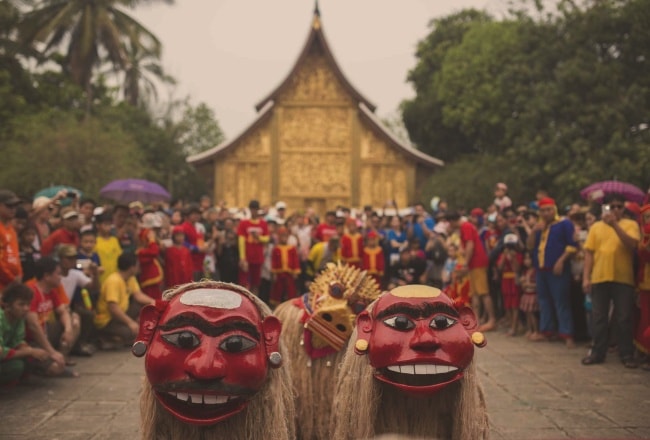
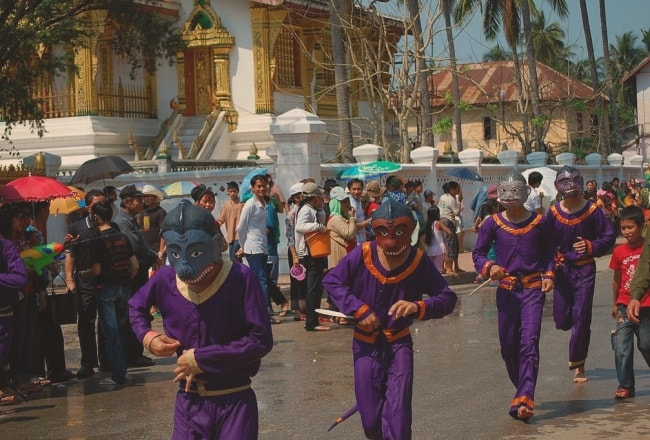


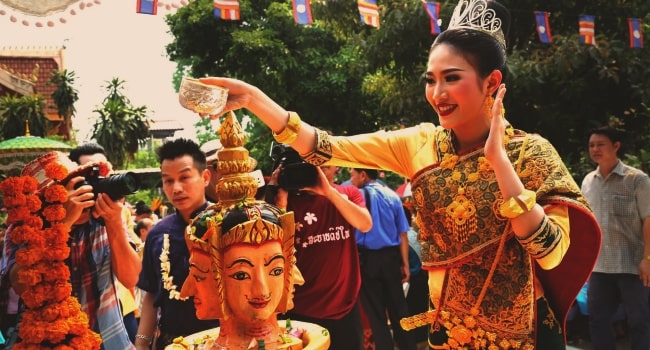

 05/01/2026
05/01/2026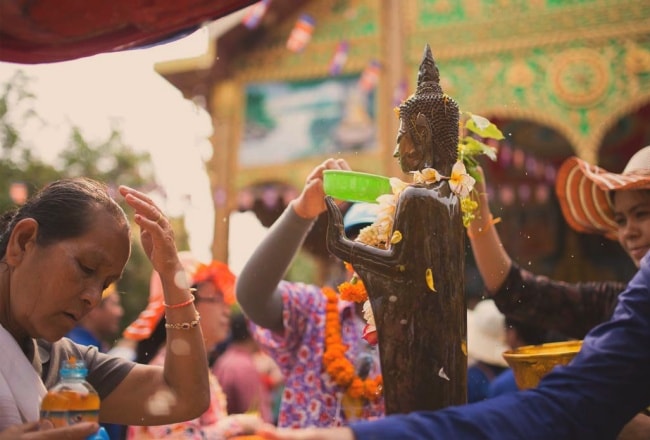

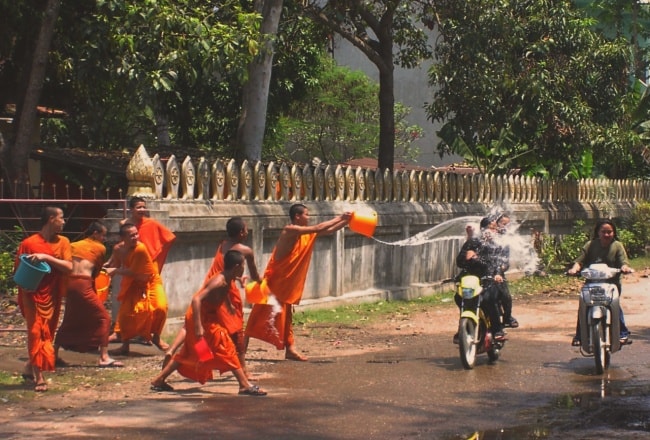




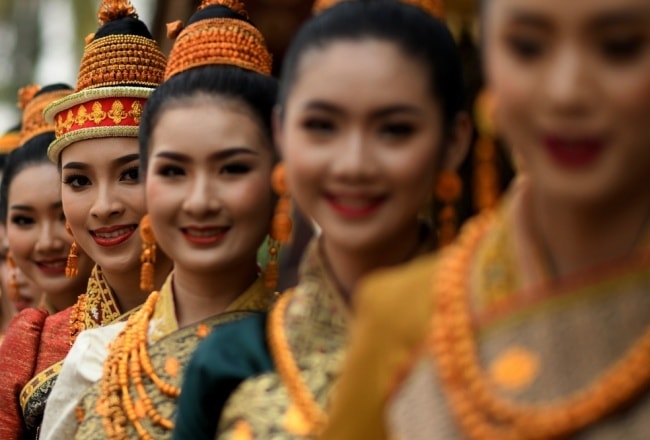
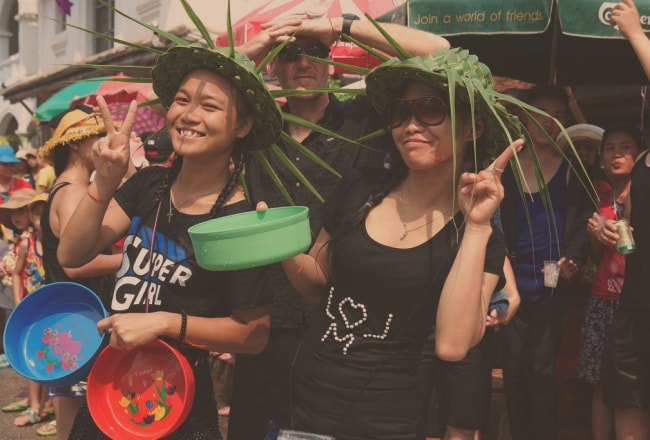
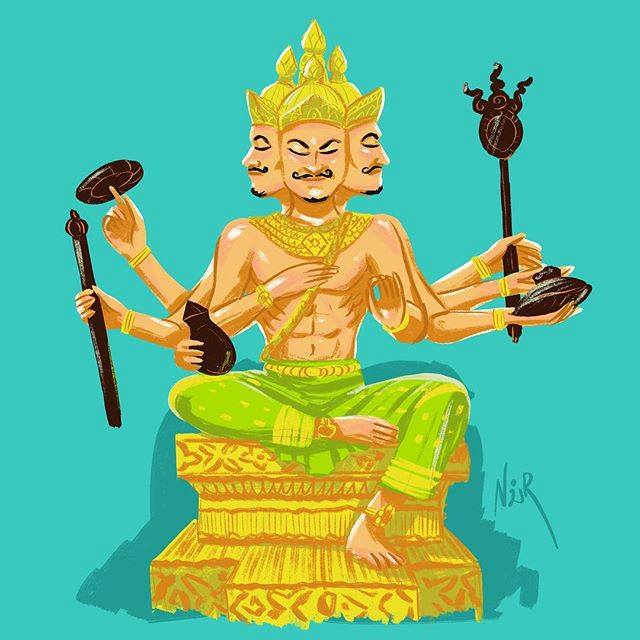
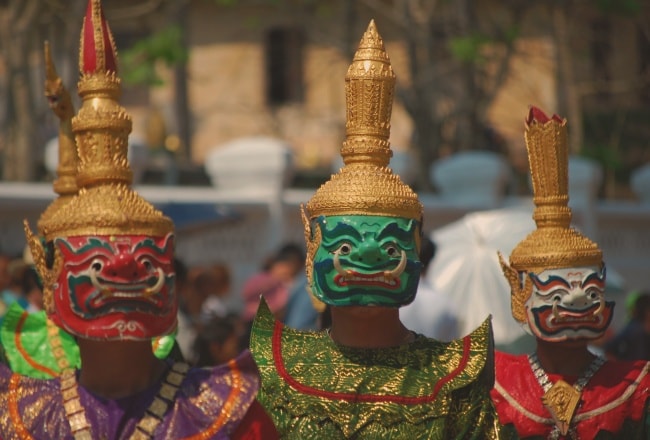
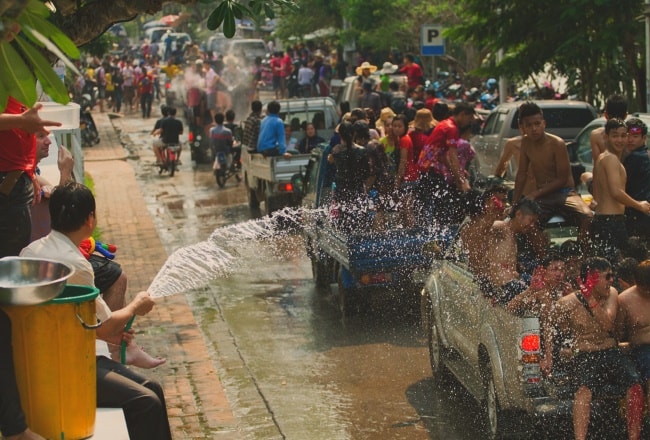
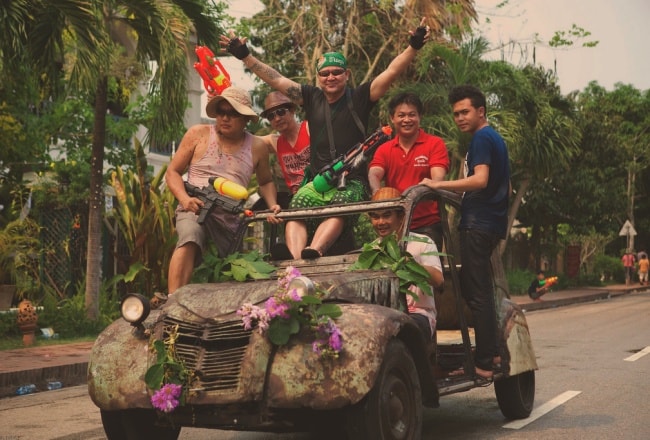

















Jolie LIEMMy name is Jolie, I am a Vietnamese girl growing up in the countryside of Hai Duong, northern Vietnam. Since a little girl, I was always dreaming of exploring the far-away lands, the unseen beauty spots of the world. My dream has been growing bigger and bigger day after day, and I do not miss a chance to make it real. After graduating from the univesity of language in Hanoi, I started the exploration with a travel agency and learning more about travel, especially responsible travel. I love experiencing the different cultures of the different lands and sharing my dream with the whole world. Hope that you love it too!